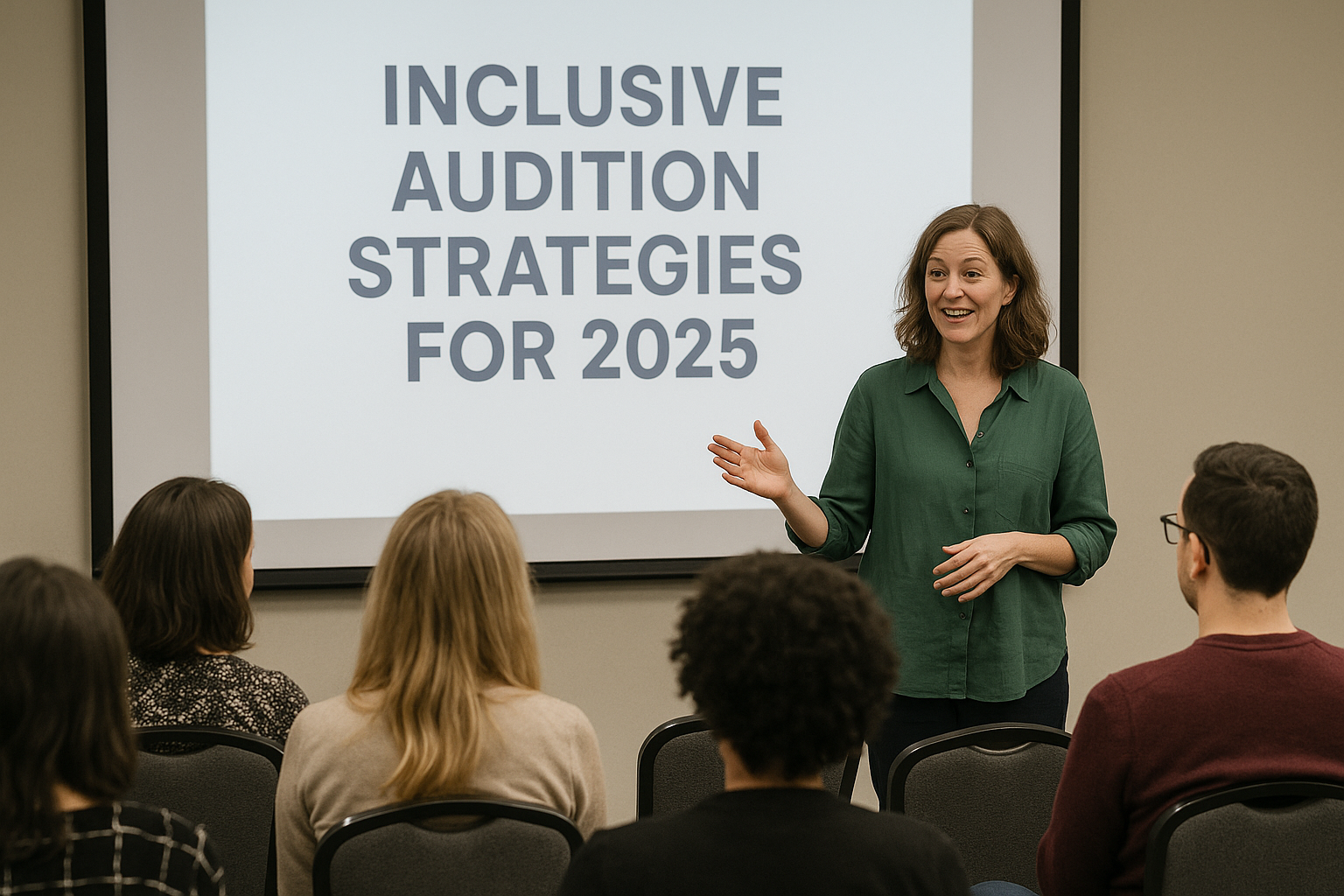Inclusive Audition Strategies for 2025
By Broadwaytrax Content Studio · November 5, 2025
Updated November 5, 2025
The best audition rooms feel calm, clear, and kind. This helps you think less about the room and more about your story. Your choices land better, and your breath stays steady. This is the heart of inclusive auditions. Inclusion isn't extra; it lowers mental stress so your talent can shine.
We recently discussed a theater that redesigned its process to be more welcoming. That story showed why change matters. This guide gives you techniques to use today, from the first email to the final callback. The goal is simple: fewer surprises, better focus, and a fair shot for everyone moving forward.
Why Inclusion Boosts Performance
When you know where to go and what to expect, your body relaxes. Your brain can think clearly. A clear setup with posted notes and predictable music starts helps reduce guesswork, leading to stronger storytelling. This matches how many auditions work now. They often blend in-person, prescreens, and hybrid callbacks. If health or travel blocks your trip, ask for a video option; it’s a reasonable request under disability laws for applicants (ADA.gov).
Plan Your Access Before You Book
Start with a quick self-audit. What do you need in the audition room? A chair? A quiet corner? Make a list. Then write a short, polite request you can use in emails. For example:
"Hello, I’m confirmed for 3:10 pm. For equal access, may I have a chair in the audition room and five seconds to set my music? Is there an elevator? If not, could I submit a video prescreen or be seen in a ground-floor space? Thank you."
These requests are your rights in the hiring process, including auditions, unless they cause undue hardship for the employer (ADA.gov).
If access info isn’t listed, ask early. A simple note will do:
"Could you share venue access details, like elevator and restroom access, and whether a remote prescreen is possible?"
Early questions help everyone prepare and help you focus.
Make Materials That Work Under Pressure
Small choices in your materials can prevent mistakes. You can include pronouns on your resume, but you don’t have to. If you do, use your stated name. Avoid the term 'preferred pronouns' as it can cause confusion (GLAAD). Add your vocal range clearly, like “A2–B4 mix.” You can also add notes, such as “uses mobility aid,” so the room knows what to expect.
For headshots and files, name them with your stated name. Keep deadnames out of filenames. In self-tapes, add captions to your slate so your name and pronouns are clear. In the video description, list the key and tempo.
Choose Repertoire That Supports Diverse Casting
Select songs with clear action and neutral lyrics. Aim for lyrics that don’t lean on gender, body, or race. If possible, prepare two keys for the same cut—one in your sweet spot and another a whole step up or down. This helps the panel imagine you across ranges.

Mark your cut for the accompanist, showing the start pitch, tempo in bpm, and a clear end. Keep a neat binder with a backup. Clear backing tracks are also helpful, especially for video submissions. Bring a one-minute story-driven monologue that doesn’t hinge on identity markers.
Communicate with Clarity, Consent, and Tempo
When you enter, say your stated name. Share pronouns if you’re comfortable. Some performers add them to the slate or resume to reduce the risk of misgendering (GLAAD). Quickly set your musical roadmap:
"It’s a 32-bar cut at 108 bpm. Please start at Rehearsal C, rubato on the fermata, and button on measure 42."
This reduces guesswork and helps the room assess your storytelling instead of your nerves.
If anyone asks about intimacy or touch, you can offer alternatives. Keep your text and eyeline, add a gesture, and say you welcome coaching during callbacks. This follows the standards asking teams to give notice of sensitive content and to offer choices (Chicago Theatre Standards).
Dance, Fight, and Intimacy at Callbacks
During movement calls, ask for tempo once and confirm:
"Could we hear the accompaniment at performance tempo?"
If you manage pain or fatigue, plan a low-impact mark that still shows your musicality and storytelling. Expect clear communication about consent for intimacy or staged combat. If touch isn’t possible for you, ask for a no-contact way to tell the scene.
Know What to Look for in Notices and Rooms
Good notices list basic info upfront. Check for elevator and restroom details, a space to share pronouns, and content notes about intimacy or violence. Many now offer remote prescreens for accessibility or travel issues (ADA.gov). Inside the room, expect two staff members, clear restart rules, short breaks between performances, and water access. No nudity or simulated sex should be requested at general calls. If there's confusion, asking for a quick reset is a professional move.
Need an audition cut in your key with clear intros, safe tempos, and a gender-flexible approach? Tell us your range and access needs—our team will deliver a tailored, accompanist-ready track that supports you in the room.
Start Your ProjectBuild a Steady Mindset
A short pre-audition script can keep you focused. Before you enter, breathe in for four counts and out for six. Visualize your first line and tempo in your mind. State your goal in a short sentence. Then go in. These small actions lower stress and help you make clear choices.
Inclusive Practice is Craft
When auditions welcome all kinds of bodies and stories, the work improves. Panels see a broader range, performers take more risks, and audiences enjoy richer experiences. You can start today by sending one clear email, marking one cut well, and taking one deep breath. If you help run auditions, remember to post access notes, use consent-forward language, and leave room for questions. Together, we can create spaces where everyone has the chance to shine.